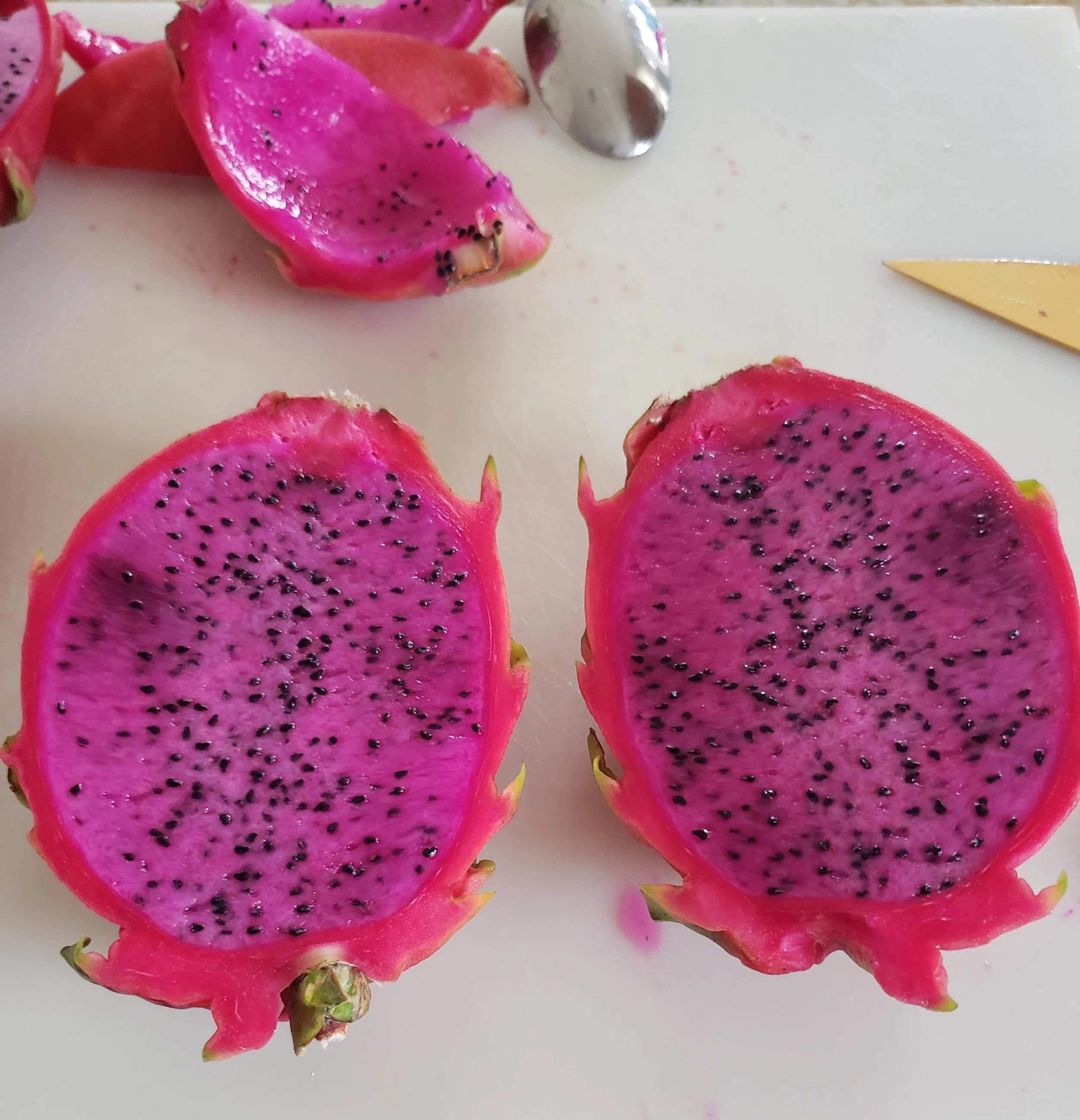What is Dragon Fruit?
How does Dragon Fruit grow?
Dragon Fruit, also known globally as Pitaya, Pitahaya, or Strawberry Pear is quickly growing amongst health-conscious people looking for a new super food.
Dragon Fruit is not only rich in calcium, vitamins B and C, but also contains prebiotics which fuel your probiotics in your gut and intestines. It is also rich in antioxidants, minerals, high in fiber, and can help extract toxicity out of the body.
Dragon Fruit can have many different flavors and can be eaten many different ways. It can be eaten in its raw form, juiced, dehydrated, freeze-dried, desserts, and can even be made into beer and wine.
Dragon Fruit is in the cactus family and needs lots of sun, a well-draining sandy soil, and regularly watering. Dragon Fruit are climbers and grow in segments. Segments produce more segments creating a never-ending growth cycle. Once a plant is mature, usually around 18 to 24 months, it is able to support flowering and fruiting.
Dragon Fruit can either be self-fertile or sterile. A self-fertile plant can pollinate its own flower as the stigma protrudes near the anthers. A sterile plant will need either an insect, such as a bee, or will need to be hand pollinated. To help increase the chances of a successful pollination most farmers will choose to hand pollinate. Once pollinated, it can take between 30 to 45 days for a fruit to ripen.
Dragon Fruit can be broken down by species or hybrid, however, it’s easier to categorize them based on skin and flesh color. The five main varieties range from red and yellow skin and have either red, magenta, white, purple, or a pink flesh. Depending on the variety, it can taste floral, like a melon, a grape, kiwi, or have strawberry characteristics.


